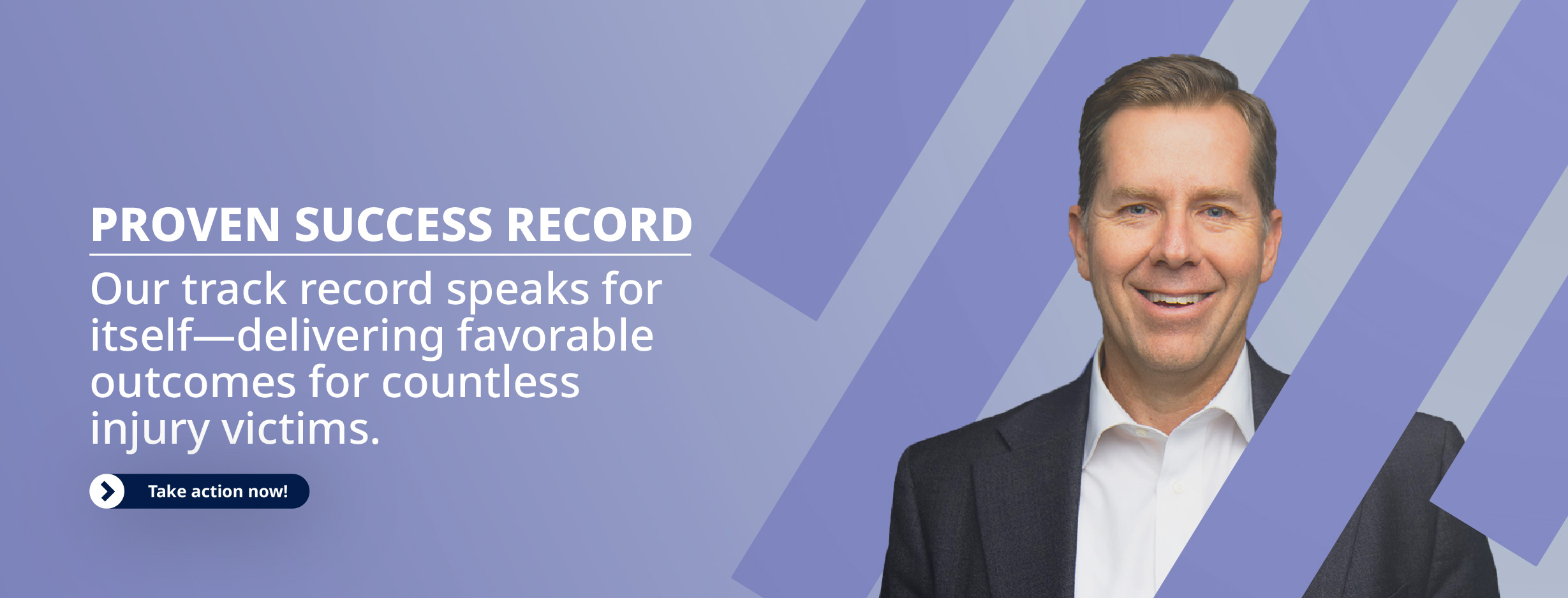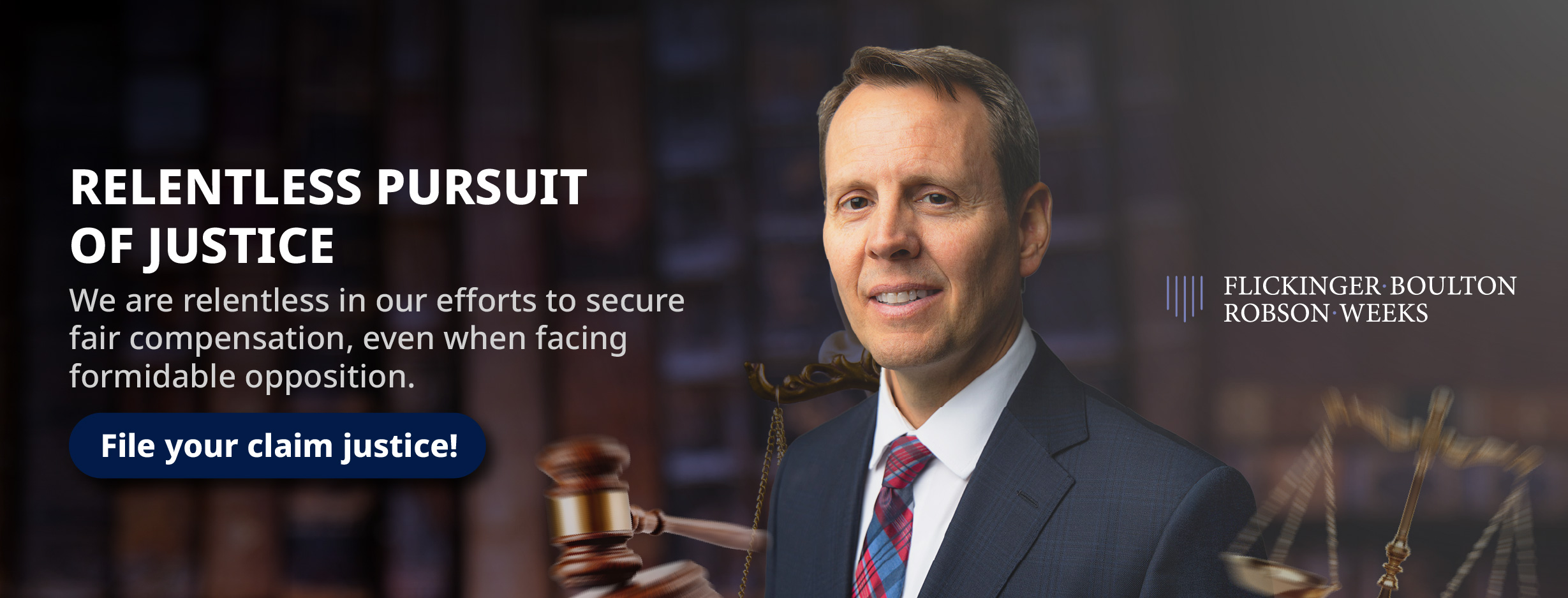¡Hablamos Español!
A truck accident can leave you injured, confused, and unsure of what to do next. After the crash, you may find that the trucking company denies responsibility, making it difficult to prove what really happened.
How can you show that the truck driver was speeding, swerving, or braking too late? This can be frustrating, but there is a solution. Many commercial trucks have electronic data recorders, also called black boxes, that store important information about the truck’s speed, braking, and movement before a crash. This data can be used to prove fault and strengthen your case.
At Flickinger Boulton Robson Weeks, our Orem truck accident lawyers understand how to retrieve and analyze this critical evidence to support your claim.
If you are struggling to prove fault after a truck accident, keep reading to learn how black box data works and how it can help you get the compensation you deserve.
A truck’s black box is a small electronic device that records how the truck is driven. It is officially called an Electronic Control Module (ECM) or Event Data Recorder (EDR) and works like the black boxes in airplanes. This device keeps track of things like the truck’s speed, engine power, seat belt use, and if the brakes were used. It also saves data from right before, during, and after a crash.
Trucking companies use black boxes to check how their trucks are performing and to find mechanical problems. If an accident happens, the black box can show important details about what went wrong, including the driver’s actions and the truck’s condition at the time.
When combined with other pieces of evidence, black box data can help paint a clear picture for insurance adjusters, judges, or juries.

Black box devices on commercial trucks can capture a wide range of data. Some models record only basic details, while advanced systems store many more indicators of vehicle performance and driver behavior. Below are key types of data you might find and why they matter.
One of the most common data points is the truck’s speed over time. The recorder might note speeds at regular intervals, sometimes every second. If a truck was speeding just before the collision, that information can help prove negligence. Acceleration data can also show if the driver rapidly sped up, which can be relevant in merging or lane-change accidents.
Black box data often tracks when the driver presses the brake pedal and how hard. This can show whether the driver tried to avoid the collision at the last minute or if they never braked at all.
A lack of braking might point to distractions, fatigue, or other factors that prevented the driver from reacting in time.
The throttle position reveals how much gas the driver was giving the truck. If the throttle was high while the speed limit was low, it might suggest reckless driving. This detail can support claims that the driver ignored posted speed limits or was speeding through traffic.
These data can reveal how the driver handled the vehicle. If the engine RPM was consistently high, maybe the driver was accelerating aggressively. Frequent gear shifts might show the driver was adjusting speed too often in a short distance, possibly indicating erratic driving.
Observing these patterns can help determine if the driver was operating the truck in a safe, controlled manner.
Some black boxes record whether the driver (or passenger) had their seat belt on. Airbag deployment times can also be logged, which helps reconstruct the sequence of events in a collision. If the driver was not wearing a seat belt, it might reflect a disregard for safety procedures.
If the black box shows the driver used cruise control in adverse weather or heavy traffic, that could indicate negligent behavior. Cruise control can reduce the driver’s sense of control, especially in situations requiring quick speed changes or sudden braking.
Some advanced systems track mechanical problems or warning signals. These might include alerts for low tire pressure, engine overheating, or brake system errors.
If these warnings appeared well before the crash, it could suggest the driver or trucking company ignored critical maintenance issues.
In many trucks, black box data combines with electronic logging devices to record driving hours. Cross-checking this data can reveal if the driver violated hours-of-service rules. If they drove more hours than allowed, fatigue could be a factor in the accident.
Each piece of recorded data can clarify what happened in the seconds or minutes leading up to a crash. For example, if speed logs show the truck was 20 mph over the limit, that strongly supports a claim of negligence. If brake usage data is absent, it might mean the driver was asleep or otherwise distracted when the crash occurred.
Black box data is also important because it is objective. Unlike witness statements, which can vary, or driver memories, which may be incomplete, electronic records offer a factual timeline. Insurance companies and courts often find this evidence persuasive. It can counter claims made by trucking companies that the driver was obeying the law.
Combining black box data with other forms of evidence, like police reports, witness testimony, or accident reconstruction, can create a robust case. If you can show the driver was speeding, swerving, and ignoring mechanical warnings all at once, it becomes harder for the trucking company to deny responsibility.
At the same time, black box data may have limits. Some devices only store data for a short window, possibly 30 seconds before and after the crash. Others might overwrite old data. That is why prompt action to retrieve the data is crucial. If you wait too long, the trucking company might clear the device or it may record new information, losing the vital crash data forever.
In short, black box data can highlight whether the driver followed speed limits, braked in time, or adhered to safe driving practices. Its reliability can shape negotiations with insurers or arguments in court. Victims of truck accidents often rely on this information to prove negligence, supporting their request for compensation for medical costs, lost wages, and pain and suffering.

While black box data is valuable, accessing it is not always straightforward. Certain legal and practical steps must be taken to secure and use this data effectively. If you are involved in a truck accident in Utah, understanding these considerations can help you avoid losing crucial evidence.
Usually, the trucking company or the truck’s owner has possession of the black box and its data. This means they might control who can see it and when. In some cases, insurance companies or third-party data management services may also be involved. If a dispute arises, the company might be reluctant to hand over the data willingly.
Black box data can be overwritten or deleted if the truck continues to operate after the accident. That is why it is essential to send a legal notice, sometimes called a preservation letter, instructing the trucking company not to tamper with or destroy the data.
Once they receive this letter, they have a legal obligation to keep the data intact. Failure to do so can lead to penalties in court, as it may be seen as destroying evidence.
If the company refuses to share the black box data voluntarily, you may need a subpoena or court order. This legal tool compels them to give you access to the device or the downloaded data.
An attorney can guide you through this process, ensuring the request is properly filed and follows court rules. Delays might occur if the company challenges the subpoena, but having clear legal grounds helps speed the process.
Once the data is obtained, establishing a chain of custody is vital. This means documenting every hand that touches the data.
If the chain of custody is broken, the trucking company or insurer might claim the data was tampered with or is invalid. Proper documentation keeps the evidence credible and usable in court.
Interpreting raw black box data can be complicated. You might see codes indicating speed or throttle position, but not necessarily in plain language. That is why accident reconstruction experts or technicians trained in black box analysis are often called upon.
They can translate the data into charts or reports that clearly show the truck’s actions. This clarity can be crucial during negotiations or trials.
Sometimes, the driver or company argues that black box data is private or proprietary information. While courts often allow the data to be used in legal disputes, balancing these privacy concerns with the need for factual evidence may arise.
Usually, if the data is directly related to the accident, courts lean toward disclosing it. However, other personal information, like the driver’s phone contacts, may be considered private unless it is clearly relevant.
Black box devices may store data for only a limited window around the crash. If the truck remains in service, new data might overwrite older records.
This is why acting fast is crucial. An attorney who knows how to send preservation letters and file quick motions can help prevent data loss. If too much time passes, the data may be gone forever, making it harder to prove your case.
Once you have the black box data, you can present it to an insurance adjuster or in a court case. The trucking company may try to dispute the accuracy of the data or offer alternative explanations.
Having an expert witness validate your interpretation can make your argument more convincing. In many cases, black box evidence leads to settlements because the company sees the strength of the claim.
In conclusion, black box data can be a game-changer in truck accident cases, but it requires specific legal procedures to access and present. An Orem truck accident lawyer will know how to navigate these challenges. They can secure the data, preserve it properly, and use it effectively to help you seek fair compensation.

At Flickinger Boulton Robson Weeks, we understand that black box data is an invaluable piece of the puzzle in truck accident investigations.
Our approach to using this technology helps ensure our clients in Orem and throughout Utah have the strongest possible case. Here is a quick look into how we incorporate black box data:
When we first learn about a truck accident, we act fast to send a preservation letter. This letter tells the trucking company not to alter or delete any electronic data from the vehicle.
Because black box systems can overwrite older data, timeliness is crucial. This early step helps secure the data before it is lost or destroyed.
Not everyone can easily interpret black box data. That is why we work with professionals who specialize in retrieving and analyzing it.
These experts know how to connect to the recorder, download the right information, and read the codes and logs. We trust their knowledge to convert raw numbers into meaningful facts about the truck’s speed, braking, or gear usage before the crash.
Black box data alone can be powerful, but we often enhance its impact by pairing it with other forms of evidence.
For instance, if the data shows the driver was speeding, we can combine that with eyewitness accounts or police reports. If it shows no braking occurred, we might correlate that with skid mark analysis from accident reconstruction professionals. This holistic approach can help build a cohesive argument about what happened and why.
Once we have the data, we use it to negotiate with insurers. Insurance adjusters know that black box records are hard to dispute if the analysis is done correctly. This can lead to more favorable settlements for our clients, covering medical bills, lost wages, and pain and suffering.
If the insurance company refuses a fair deal, we are ready to present this evidence at trial, where judges and juries often find digital records persuasive.
Throughout the process, we keep you informed, explaining how the data supports your claim. We answer questions and address concerns, so you understand each step. This level of communication can provide reassurance during a stressful time, reminding you that you are not alone in fighting for fair compensation.
Our firm’s history of notable settlements, including a $5 million settlement for a wrongful death case and $20 million for an industrial accident case, highlights our commitment to thorough investigations to build a strong claim for clients. Black box data is one of many tools we use to uncover the truth.
By identifying driver negligence or mechanical failures, we strive to hold trucking companies accountable and secure the financial resources you need to move forward.
If you believe black box data could be a key element in your truck accident claim, Flickinger Boulton Robson Weeks is here to help. Call our Orem law firm at (801) 500-4000 to set up a free consultation with an Orem truck accident lawyer. We have guided many clients throughout Utah to favorable settlements, drawing on evidence like black box data to prove driver or company fault.
When you meet with us, we will discuss your accident in detail, evaluate whether black box information is crucial to your case, and outline the next steps. Our attorneys and professional staff handle everything from sending preservation letters to analyzing the final data. We know how to use these findings in negotiations or court to strengthen your claim.
Do not let confusion or delays harm your right to fair compensation. Reach out today to secure the support and legal knowledge you deserve.
Bicycle Accidents
Motorcycle Accidents
Boating Accidents
Recreational Vehicle Accidents
Bus and Mass Transit Accidents
Pedestrian Accidents
Automobile Accidents
ATV or UTV Rollovers
Commercial Vehicle Accidents
Semi Truck and Trailer Accidents